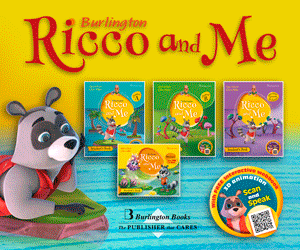But children are tested regularly in 60-second bursts on meaningless letter combinations — often pushed to go faster than one per second. Fluency equates to speed. I understand the importance of decoding skill, and I’m sure that some kids — the sprinters — might like this form of racing. But I wonder what image of reading we are passing on, and how the stragglers feel.
This obsession with speed has not always been dominant. The McGuffey readers encouraged patience and repeated readings that would lead to oral performance. But in the 1920s, reading educators argued that oral reading was too slow and inefficient—in fact, students needed to cut themselves off from any connection to sound and oral performance.
One popular guide at the time advised teachers to have students — literally — hold their tongue while reading, thus preventing sounding out words. Another technique was to bring a piece of wood to class and bite down on it while reading. Another was to allow them to chew gum while reading. If sound was turned off in these ways, students could process bigger visual chunks.
I myself am a slow reader. Always have been. I enter a book or essay carefully, trying to get a feel for this writer/narrator/teller that I will spend time with. I hear the language, feel the movement of sentences, pay attention to punctuation, sense pauses, feel the writer’s energy (or lack of it), construct the voice and temperament of the writer.
If I am going to spend time with an author, I want to hear his or her voice — I want some human connection.
I have therefore joined the slow reading movement. Like the slow food movement, it is about more than just slowing down, though that is part of it. It is about an intimacy with authors; it is about paying attention, about caring, about rereading and savoring what we read. It is about finding the right pace. About pleasure more than efficiency.
Slow reading is also about recovering old practices that have traditionally aided readers in paying attention — oral performance, annotation, exploring complex and difficult passages. It is about reading that generates ideas for writing, what Ralph Waldo Emerson called “creative reading.” And even memorization.
When I advocate memorization to colleagues and friends, I usually get a startled response, as if I turned in my John Dewey Progressive Educator card. Then the recitations start. Maybe something from Robert Frost, or “The Highwayman,” or “The Cremation of Sam McGee.”
My father tells the story of how he and his brother waited outside the probate court in Covington, Kentucky, after their mother’s death. They waited and waited, and my uncle finally sighed and said, “The law’s delay, the insolence of office.”
And where had that come from? His memorization of Hamlet’s soliloquy in high school, 50 years earlier. As St. Augustine claimed, these memorized passages come back to us at a “time of affliction.” We recover them when we need them.
I spoke with our local pastor about memorization, and she said that she often sat with dying patients and those in the late stages of dementia. Many are unable to recognize close relatives. But they could still sing together, hymns learned in childhood; the words and melodies come back, their last shred of selfhood. Can anything we teach be more powerful than that?
By slowing down, by refusing to see reading as a form of consumption or efficient productivity, we can attend to word meanings and sound, building a bridge to the oral traditions that writing arose out of. We can hold passages in memory, we can come to the view that good texts are inexhaustible. And by being patient and deliberate, we can tackle difficult texts.
The goal of reading instruction should not be to rush this process, not to put students on the clock, but to say in every way possible — “This is not a race. Take your time. Pay attention. Touch the words and tell me how they touch you”
By Tom Newkirk
.washingtonpost.com





